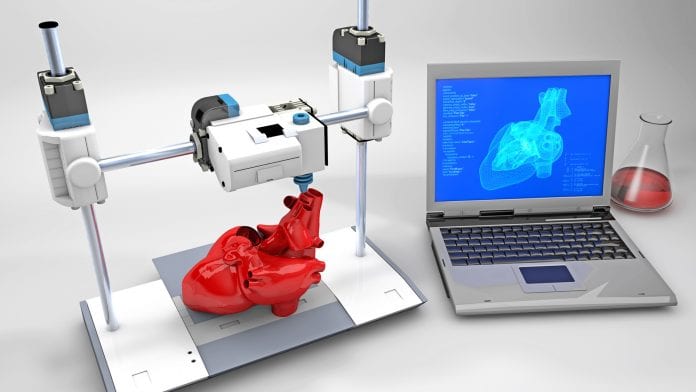
Researchers investigating the benefits of 3D printing technology found it can deliver significant improvements to the running of hospitals.
A new study has found that using 3D printing technology in hospitals has aided complicated surgeries, and eased time and financial pressures. The research, which compared the drawbacks and advantages of using 3D printing technology in hospitals, has been published in the International Journal of Operations and Production Management.
The study was undertaken by Dr Atanu Chaudhuri, Associate Professor in Technology and Operations Management at Durham University Business School, alongside colleagues at ORT Braude College of Engineering in Israel, and the University of Southern Denmark.
The researchers conducted interviews, workshops, and field visits to better understand the reasons for investing in the technologies, how they were being used by surgeons and professionals on the surgical teams, and the results of their implementation.
Dr Chaudhuri, who is also a member of the Centre for Innovation and Technology Management at the Business School and Fellow of the Wolfson Institute of Health and Wellbeing at Durham University, said: “Our study sought to address two key concerns from the healthcare sector when considering whether to commit to the significant financial investment that 3D printing technology would require.
“First, we wanted to discover how custom-designed, 3D printed anatomical models, implants, and surgical instruments could impact upon hospital flow times, surgical outcome variability, and any other clinical outcomes that may result from its use. Second, we aimed to understand how hospitals make decisions regarding investment in 3D printing for surgical purposes, and how our research might help clarify that process.”
The study revealed that introducing such technology into hospitals could help alleviate many of the strains the UK healthcare system and healthcare systems worldwide face.
Boosting surgery success rates
The research revealed that 3D printing makes it possible for surgical teams to print 3D models based on an individual patient’s surgical needs, providing more detailed and exact information for the surgeon to plan and practice the surgery, minimising the risk of error or unexpected complications.
The study also found that the use of 3D printed anatomical models was useful when communicating the details of the surgery with the patient, helping to increase their confidence in the procedure.
Speeding up patient recovery time
Hospitals which provided surgical teams with the ability to produce 3D printed anatomical models, surgical tools, and implants saw a significant reduction in post-surgery complications, patient recovery times and the need for subsequent hospital appointments or treatments. Dr Chaudhuri said this is because 3D printed implants can be designed to be a perfect fit for each patient, helping the body to adopt them quicker and without complication. As a result, costs are reduced for both the hospital and patient.
Speeding up procedures
3D printing technology could also provide surgeons with custom-built tools for each procedure, with the findings revealing that surgeries with durations of four to eight hours were reduced by 1.5 to 2.5 hours when patient-specific instruments were used.
Dr Chaudhuri also noted that such customisation could also make surgeries less invasive (for example, removing less bone or tissue) and result in less associated risks for the patient (for example, by requiring less anaesthesia).
Real-life training opportunities
The technology enables trainee surgeons to familiarise themselves with the steps to take in complex surgeries by practicing their skills on examples that accurately replicate real patient problems, and with greater variety.
Careful consideration required
Despite the research showing strong and clear benefits of using 3D printing, Dr Chaudhuri and his fellow researchers urge careful consideration for the financial costs.
3D printing is a significant financial investment for hospitals to make, particularly those ran by the NHS already operating under significant financial pressures. In order to determine whether such an investment is worthwhile, the researchers have also developed a framework to aid hospital decision-makers in determining the return on investment for their particular institution.
Dr Chaudhuri said: “The decision to implement 3D printing in hospitals or to engage service providers will require careful analysis of complexity, demand, lead-time criticality, and the hospital’s own objectives.”







